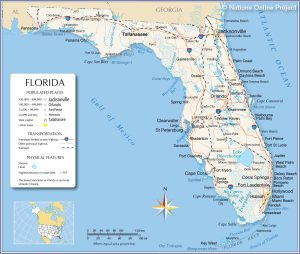Government Grants and Student Loans
 Government grants might sound like a free lunch to many people. However, they are not. With grants, the recipient will be expected to file progress reports after the money is received. This does not mean that grants can’t be helpful for giving a person or organization a little extra boost. Grants and low-interest loans provided by governments and private non-profit organizations can be good for people who have big dreams but don’t always have the finances to match. Want to go back to college? Skip the banks, see if you can find a cheap student loan, and also be sure to apply for scholarships, which are a kind of grant specifically designed for college students who might just need a little extra financial boost.
Government grants might sound like a free lunch to many people. However, they are not. With grants, the recipient will be expected to file progress reports after the money is received. This does not mean that grants can’t be helpful for giving a person or organization a little extra boost. Grants and low-interest loans provided by governments and private non-profit organizations can be good for people who have big dreams but don’t always have the finances to match. Want to go back to college? Skip the banks, see if you can find a cheap student loan, and also be sure to apply for scholarships, which are a kind of grant specifically designed for college students who might just need a little extra financial boost.
Types of Grants
Grants typically come in two main categories: general purpose grants, which support the day-to-day operating expenses of an organization, or program development, in which the grant supports the processes involved in executing the activities of a campaign.
There are also a few subcategories of grants:
- Planning grants cover the expenses of researching and planning for the future of an organization. This includes planning for any major new program.
- Start-up grants go toward the costs of starting a new business or non-profit organization.
- Facilities and equipment grants go toward the development of the physical materials, like warehouses, factories or vehicles, needed to start or grow your organization.
- Endowment grants are typically principle money set aside for investments. These are common among hospitals and colleges.
- Program-related investments are low- to no-interest loans made to an organization.
How To Write A Good Grant
Get A Grant
How Student Loans Work
 Student loans are designed to meet a student’s educational expenses as he or she goes to college. These loans include federal family educational loans, undergraduate loans, college student loans, and private student loans. The federal loans generally have lower interest rates than the other kinds.
Student loans are designed to meet a student’s educational expenses as he or she goes to college. These loans include federal family educational loans, undergraduate loans, college student loans, and private student loans. The federal loans generally have lower interest rates than the other kinds.
Student loans are typically only paid off after a student graduates from college. Many loans give students a six month grace period to settle into a job before they become due. Unlike private loans, federal loans are not affected by a student’s credit score and, thus, do not require a co-signer. If a student’s financial situation worsens, a loan may be deferred or, under strict guidelines, forgiven altogether. In cases of bankruptcy, the student loans will likely not be discharged unless it is clearly proven that the loan repayments are causing undue hardship. This primarily means that the student is facing the choice of paying off the loans, or paying for basic necessities.
How To Choose A Loan
Many lenders are quite willing to make loans to students. The trick is to find the best loan that fits your needs. Two terms you might hear thrown out there are personal student loans and federal student loans. Personal loans are made by a private institution, usually a bank. Federal loans are, as you might guess, loans made by the government. The federal loan can be either subsidized (interest is paid by the government while the student is still in college) or unsubsidized (Interest builds up while student is in school).
One popular student loan program is the Sally Mae fund, which arranges loans through private institutions at a lower interest rate than might otherwise be charged. Students can apply at the financial office of their school. The amount of the loan is based on the student’s family’s financial needs and goes directly to the school. After tuition is deducted, the student will get a check to cover other school-related expenses like books.
Banks will base your interest rate on your credit score and often requires some form of collateral. This often means a second mortgage. They may also require a co-signer.














